Hydrangea paniculata (lat. Hydrangea paniculata) is a flowering shrub crop from the Saxifraga family, from one and a half to three meters in height, with high decorative qualities and unpretentiousness in cultivation. With its help you can decorate any areas in the garden and country house, even the most problematic and unsightly ones.
|
The flowering period of hydrangea lasts from the beginning of summer until almost the end of October. |
| Content:
|
With proper planting and regular care, paniculate hydrangea will give the first inflorescences in white, pinkish and purple-red tones already in the second or third year after planting. The lush bush attracts a large number of beneficial insects to the site, and over the course of several months its color gradually changes from white to pink and purple.
The culture consists of a powerful branched root system, which is located at a shallow depth, strong shoots with a red-brown surface, elliptical leaf blades of a dark or light green hue from five to fifteen centimeters long and luxurious inflorescences - panicles with a unique pleasant aroma, consisting of small flowers.
Among the many varieties of paniculata hydrangea, there are varieties that grow well in pots and flowerpots. In an open area, the plant can grow without replanting for five to six decades.
Conditions for growing hydrangea
Planting paniculata hydrangea must begin with preparatory work, which includes choosing a location and preparing the soil.
Place to grow hydrangea
Requirements for an ideal landing site:
- direct sunlight (no more than three hours a day) in the morning (before 10.00) or evening (after 18.00), with light shade the rest of the time or full lighting throughout the day, but without direct rays;
- protection from cold drafts and sudden gusts of wind;
- nutritious soil with moderate moisture, neutral or acidic in composition;
- groundwater is deep;
- the interval between the nearest plants - neighbors - is from one to two meters.
On a note! It is not recommended to plant hydrangeas near moisture-loving trees, as they will take all the moisture for themselves, but you should not use open areas either. Under the open sun, decorativeness decreases - the inflorescences become smaller and less saturated in color.
Setting the stage
Hydrangea needs soil that is necessarily nutritious, moderately loose, well-drained and moist (even slightly waterlogged will do), acidic or slightly acidic. To acidify the area, sawdust, half-rotted spruce or pine needles, peat chips or brown peat, and coarse river sand are added to the soil. The composition of the soil can be in several options:
- leaf and turf soil, rotted humus, peat and coarse sand (the proportions are the same);
- two parts each of leaf soil and humus, one part each of sand and peat chips;
- peat, rotted humus and garden soil (the proportions are the same).
|
After preparing the planting site and soil, it is necessary to dig planting holes with a diameter of fifty to eighty centimeters, depending on the size of the root system of the seedling. The depth of the pit is from forty to sixty centimeters. |
The night before, two to three buckets of water are poured into each hole to deeply saturate the soil. In the morning, on the day of planting, the hole is filled fifty percent with drainage material and fertile earthen mixture (in the form of a mound) with the addition of superphosphate (60 grams) and urea (25 grams).
On a note! For the drainage layer, broken red brick, pebbles, and expanded clay are used.
Planting hydrangea in spring in open ground
- Seedlings that have spent the winter in the open ground can be planted in a permanent place as soon as the snow melts and the ground begins to thaw. Greenhouse specimens with foliage are transferred to an open area only after stable warm weather has established, without the return of night frosts.
- Depending on the variety, the distance between crops is from one to two and a half meters.
- Young bushes are placed in the center of the hole on a mound of soil mixture, each root is straightened and they begin to gradually add soil and water with settled water. This is necessary so that there are no voids left and the soil fits tightly to the root part.
After compacting the soil and filling the planting hole, the root collar should remain flush with the soil surface.
- A mulching layer three to five centimeters thick from a mixture of pine needles and fallen leaves, crushed bark or peat chips is applied to the wet area of the tree trunk circle.
Hydrangea care
When and how much to water
The frequency of watering depends on several factors. For example, shrub plants are usually watered once a week if mulch is not available. During hot, dry periods, water procedures are increased to two or three per week. If there is a mulch layer and normal weather, two to three waterings per month will be sufficient.
|
Each adult bush requires three to four buckets per watering. |
How to feed correctly
From spring to autumn, at the main stages of development, hydrangea needs to be fed three to four times.Mineral fertilizers can be used specifically recommended for hydrangeas or purchase nutrient mixtures for azaleas and rhododendrons.
|
Hydrangeas also respond well to organic fertilizers. |
- The first fertilizing containing nitrogen (in spring) promotes active growth of shoots and the formation of new branches.
- The second (in June), containing potassium, is needed for more active formation of buds. A nutrient solution of ten liters of water and one tablespoon of potash fertilizer is watered around the circumference of the tree trunk.
- During the flowering period, crops are fed with a mineral complex (high in potassium and phosphorus) in the form of a solution or granules for embedding in the soil.
- After the end of flowering and before the plant goes into dormancy, another feeding is carried out, which will give the hydrangea strength and help it survive the cold autumn and winter months.
Carrying out pruning
Pruning of paniculata hydrangea is carried out in spring and autumn for sanitary and rejuvenating purposes, to give shape or to prepare for wintering.
|
Trimming scheme |
- When planting seedlings, approximately one third of the young plant must be pruned.
- Young and mature shrubs are pruned in each spring season before the buds swell. The bush is removed from damaged, dried and frozen branches.
- In order to form a certain shape, it is necessary to carry out pruning as the bush grows and the size of its crown and height increase. Usually it consists of removing branches directed into the crown and too long shoots that stand out from the general outline.
- Already quite mature plants require a rejuvenating haircut, which helps restore abundant and lush flowering.
- When preparing for winter, you should take care that the branches are not damaged under the weight of snow. To do this, it is recommended to remove faded inflorescences along with a small part of the stem.
Disease and pest control
Hydrangea is highly resistant to pests and various diseases. The only possible problem is the occasional chlorosis of the leaves. This usually happens due to improper care, namely when using unsettled tap water for irrigation and inappropriate soil composition.
|
This is what leaf chlorosis looks like |
Lime that gets into the soil during irrigation, as well as insufficiently acidic soil, are ideal conditions for the development of the disease. Its signs are fragile, brittle branches and very small inflorescences with drying individual flowers.
Treatment consists of applying potassium nitrate twice a week and feeding the plant with complex mineral fertilizer or fertilizing containing iron.
Planting hydrangea in summer with a closed root system
Summer planting of paniculata hydrangea has its advantages:
- seedlings, when placed in well-warmed soil, do not experience discomfort and quickly take root in a new place;
- before the onset of winter, the plants have time to grow stronger and gain strength;
- Full flowering occurs the following summer.
There are the following requirements for planting material:
- the average height of a seedling is from fifty to one hundred centimeters;
- living roots should be visible through the earthen ball;
- each seedling has at least two living shoots;
- the kidneys must be healthy and undamaged;
- there should be no damage to the surface of the bark.
|
Seedlings with a closed root system can be planted in summer |
The technology for summer planting is quite simple and includes the following actions:
- the size of the planting hole should exceed the size of the earthen ball on the seedling by one and a half to two times, it is prepared several days before planting and filled with two to three buckets of water;
- special soil for filling the pit is prepared from two parts of chernozem and rotted humus, one part each of sand and peat, three tablespoons of superphosphate, two tablespoons of potassium sulfate and urea;
- the plant removed from the container, together with a lump of earth, is placed in the center of the hole, covered with the prepared soil mixture, compacted and watered abundantly;
- the area around the bush is mulched with sawdust, pine needles or peat.
Features and time of planting hydrangea in autumn
Autumn planting of hydrangea is most often used by gardeners in regions with warm climates, where autumn comes late and the seedlings still have time to take root before frost arrives. Bushes planted in the fall and overwintered during the cold period become very hardy and strong, and are not afraid of temperature changes and various vagaries of the weather.
The favorable period for planting is September - October, approximately thirty to forty days before the arrival of the first frost. Depending on the climatic conditions of your area, dates will differ. For example, in the Moscow region it is better to plant paniculata hydrangea from September 1 to 15, in the Urals and Siberia - from August 20 to September 5, and in the southern regions - throughout October.
Features and advantages of autumn planting:
- It is not recommended to plant young bushes with weak open roots; it is better to take large seedlings with a closed root system;
- with the right choice of planting time, hydrangea will bloom in the coming spring;
- young crops are not afraid or dangerous from pests and diseases, since at this time they are no longer active;
- seedlings need a small amount of nutrients, since there will be no active growth and development until spring;
- plants will need reliable shelter for the winter;
- with regular rainfall, seedlings do not need watering, but with the abundance and duration of rain plus cool weather, fungal diseases are possible;
- the width and depth of the planting pit for a seedling is about fifty centimeters;
- the distance between plantings is from one and a half to two and a half meters, for creating a hedge - about eighty centimeters, proximity to other bushes and trees - up to three meters;
- a special soil mixture is prepared from humus and leaf soil (ten kilograms each), sand and peat (five kilograms each), superphosphate (sixty grams), urea and potassium sulfate (twenty grams each);
- the hole is filled with a nutrient mixture by a third (for seedlings with a closed root system) or two-thirds seven to ten days before planting;
- the seedling is placed in the center, sprinkled with soil, compacted and watered abundantly;
- after the soil settles, the root collar should be at soil level;
- To prevent fungal diseases, it is recommended to spill the soil in the tree trunk circle with a weak solution of potassium permanganate (twice at intervals of a week), and then apply a mulching layer.
Planting and caring for hydrangea in pots in the garden
Hydrangea in pots looks great in the garden and backyard and has a number of advantages over plants in open ground.
- Container crops can be easily moved to a new location if the need arises.
- Any area can be transformed, decorated and beautified in a short time.
- Any varieties can be planted in pots and various other containers - winter-hardy and heat-loving.
- The bushes begin to bloom much earlier and remain decorative for a very long time.
Containers made of different materials are suitable for planting hydrangeas - stone and wood, plastic and clay, galvanized and wicker. You can use old barrels and buckets, baskets and boxes. An important condition is the presence of drainage holes and a volume of at least ten liters (for seedlings).
|
As the bushes grow, they are transplanted into larger pots. |
The pots are filled with a loose substrate with an acidic reaction, a seedling is placed, the soil is compacted, and it is moistened. Planting can be done in spring and autumn. You will have to care for paniculate hydrangea growing in a pot somewhat differently than for plants in open ground.
Features of caring for potted crops:
- every four to five years, the hydrangea is transplanted into another pot;
- in the spring, plants are fed with a mineral complex, the soil is mulched, and weak shoots are pruned;
- The bushes are moved to the open air in the last days of April, shading them from direct sunlight;
- watering must be done every day in hot weather and every other day the rest of the time;
- for irrigation you need settled tap water or rainwater;
- from May to August, hydrangea is fed with organic matter every ten days;
- pruning of all inflorescences is carried out after the end of flowering, during the same period you can thin out the bush and rid it of unnecessary shoots;
- in winter, the bushes are kept in a dark, cool room (for example, in a cellar) with a temperature of zero to five degrees Celsius; the drying substrate in the pot is periodically moistened;
- Before leaving for the winter, hydrangea shoots are tied with twine.
On a note! To prevent gray mold in winter, you can spray the bushes with fungicides.
Planting hydrangeas in pots:
Propagation of hydrangea by cuttings and layering
The method of propagation by cuttings is considered universal, quite troublesome and very effective. This method can be used at almost any time of the year.
Propagation by cuttings
In the spring, When pruning a bush, cuttings ten to fifteen centimeters long are cut from woody or green shoots, with three to five buds on each. Before harvesting cuttings, the branches are kept for forty-eight hours in a container with settled water at room temperature.
|
Preparing the cuttings |
Planting for rooting is carried out in a special moist substrate made of equal parts of peat and sand, at an angle of 45 degrees, covered with transparent plastic film. Cuttings can be transferred to an open area only after a year, and before that they should be kept in greenhouse conditions, in a greenhouse.
For summer cuttings the tops of non-lignified shoots are suitable. Favorable time is the first half of July. In the lower part, the leaves are completely removed, the rest are shortened by fifty percent.
The cuttings are planted in a container with a substrate of two parts leaf soil and one part coarse sand, covered with a liter jar or a cut plastic bottle. Care consists of weekly ventilation and moderate moisture.
|
Its own root system will appear in about thirty days, but hydrangea can only be planted in the garden plot next spring. |
For cuttings in winter period, you will need a hydrangea bush, which is wintering in the cellar or basement.At the end of January, plants are usually transferred to light to create favorable conditions for awakening and the beginning of growth.
In February, it is already possible to cut green cuttings with two internodes, completely removing the lower leaves and shortening the upper ones by half. The lower oblique cut is treated with a growth stimulator (for example, “Kornevin” or “Heteroauxin”) and the cuttings are planted in small individual pots with a nutritious earthen mixture.
Reproduction by layering
Propagating hydrangea by layering is a simpler method. The most favorable time for the procedure is the second half of March or the beginning of April, when the buds are just beginning to bloom.
One-year flexible side shoots, located as close to the ground as possible, are bent to a groove prepared under the bush, pinned with a wire bracket or other convenient device and sprinkled with moistened soil, leaving the top on the surface. For quick rooting, it is recommended to cut the shoot a little at the point of contact with the soil.
Care consists of regular watering and periodic hilling of emerging vertical shoots. In early October, the rooted cuttings are separated from the adult crop, left for the winter in a cool room in a container with a nutrient substrate, and in the spring they are planted in open ground.
Video about propagating hydrangea by layering:
Preparing for winter
Hydrangea paniculata is considered the most winter-hardy species, which can withstand frosts up to twenty-five to thirty degrees. Only young bushes require complete cover. They must be tied with twine, bent to the surface of the ground and covered with spruce branches.
In adult specimens, it is recommended to cover the tree trunk circles with two protective layers that will prevent the root system from freezing - a layer of dry soil and a layer of fallen leaves (ten centimeters each).
Don't forget to read:
Conclusion
Proper planting and simple care are all that is needed for the full growth of paniculate hydrangea. Every novice gardener and florist can grow a beautiful flowering bush. The result of your work can be admired for several decades. Great success to everyone!
Other articles about hydrangeas:
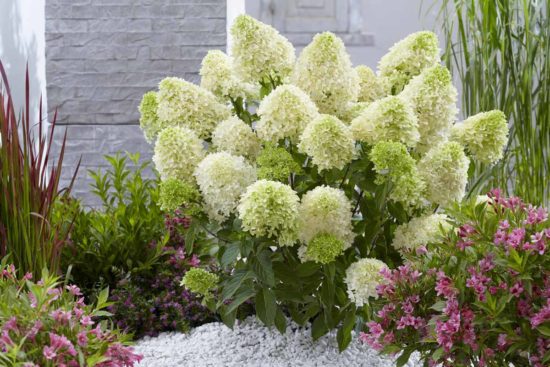
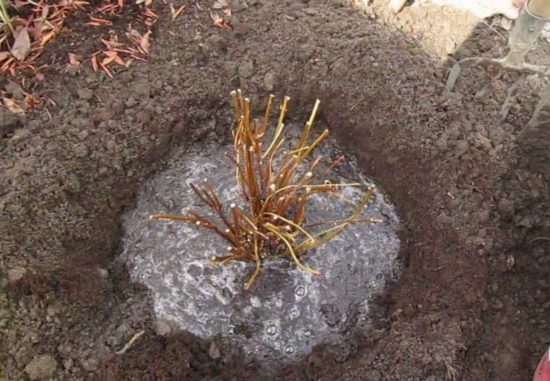
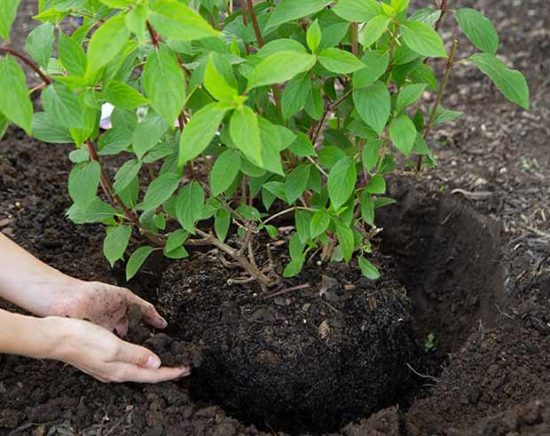
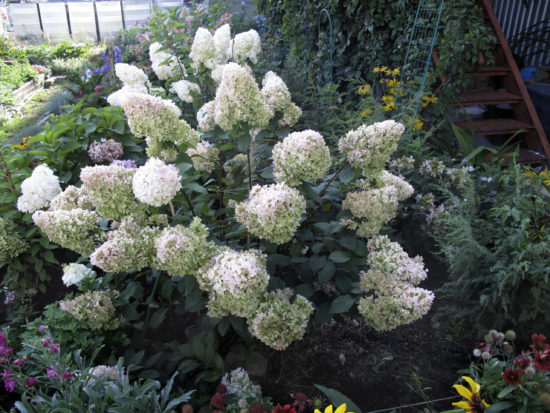
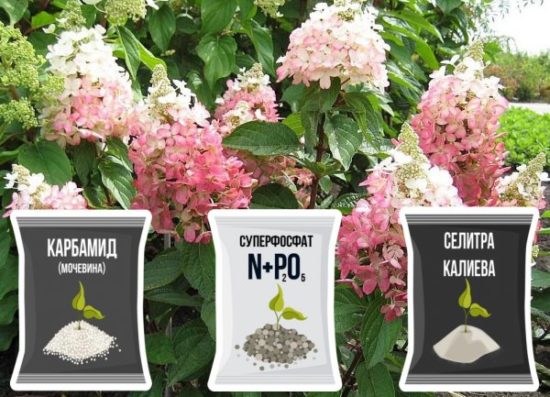
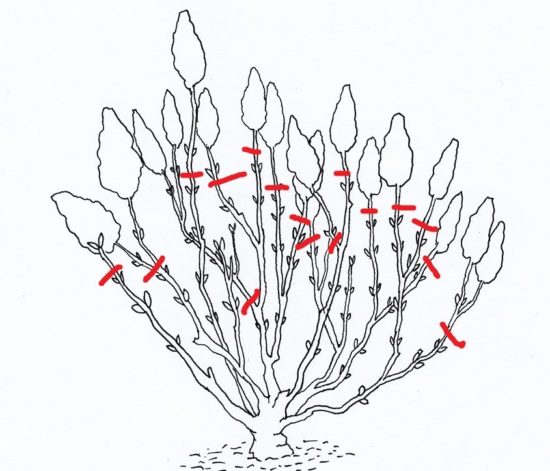
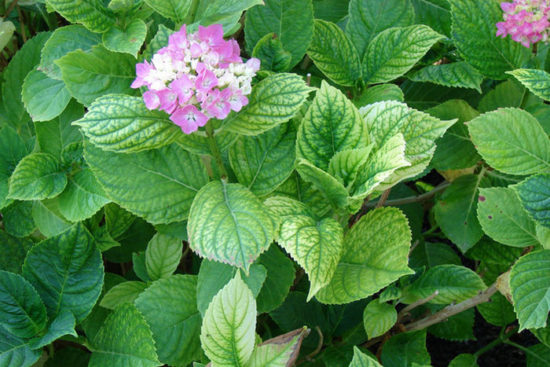
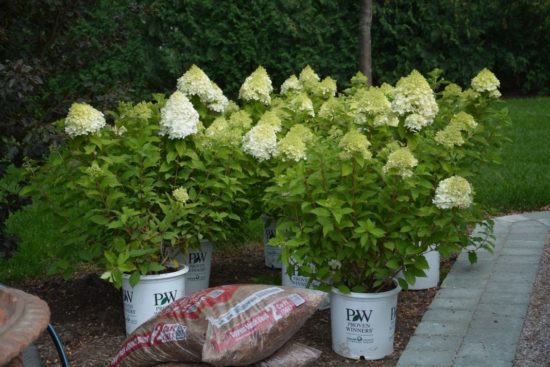
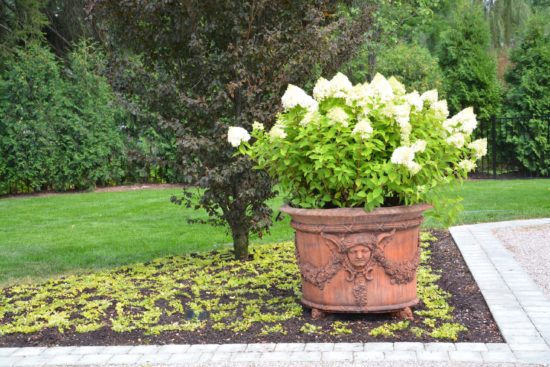
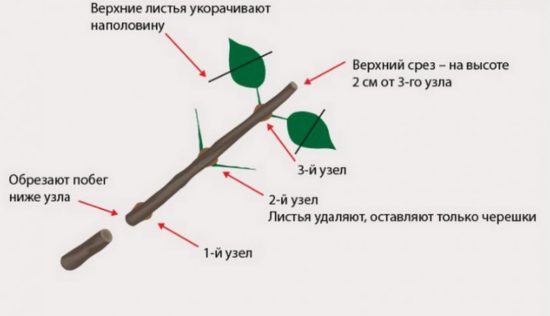
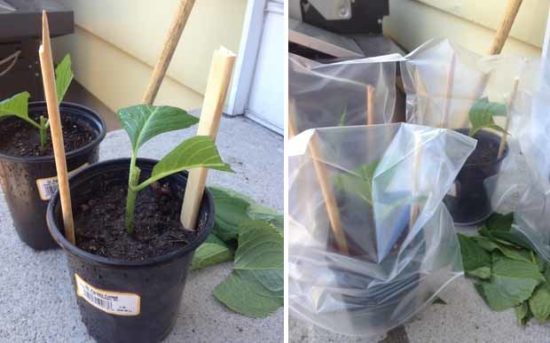

 CUCUMBERS NEVER GET SICK, I'VE BEEN USING ONLY THIS FOR 40 YEARS! I SHARE A SECRET WITH YOU, CUCUMBERS ARE LIKE THE PICTURE!
CUCUMBERS NEVER GET SICK, I'VE BEEN USING ONLY THIS FOR 40 YEARS! I SHARE A SECRET WITH YOU, CUCUMBERS ARE LIKE THE PICTURE! You can dig a bucket of potatoes from each bush. Do you think these are fairy tales? Watch the video
You can dig a bucket of potatoes from each bush. Do you think these are fairy tales? Watch the video
 How our fellow gardeners work in Korea. There is a lot to learn and just fun to watch.
How our fellow gardeners work in Korea. There is a lot to learn and just fun to watch. Eye trainer.The author claims that with daily viewing, vision is restored. They don't charge money for views.
Eye trainer.The author claims that with daily viewing, vision is restored. They don't charge money for views. A 3-ingredient cake recipe in 30 minutes is better than Napoleon. Simple and very tasty.
A 3-ingredient cake recipe in 30 minutes is better than Napoleon. Simple and very tasty. Therapeutic exercises for cervical osteochondrosis. A complete set of exercises.
Therapeutic exercises for cervical osteochondrosis. A complete set of exercises. Which indoor plants match your zodiac sign?
Which indoor plants match your zodiac sign? What about them? Excursion to German dachas.
What about them? Excursion to German dachas.
Hydrangea can also be grown in the middle zone, but you will have to tinker a lot.
Hydrangea loves rich soil and does not tolerate excess lime. When planting in a hole, you need to add humus, peat, and a little sand to the clay soil. It would be good to mulch the tree trunk circle with high-moor (red) peat or pine litter.
New - Endless Summer hydrangea (Endless Summer). Pink and blue. Blooming on the shoots of both last and current years! That is, it is remontant and also winters normally in the middle zone. True, with cover. There are also Tweets and Shout blue and Tweets and Shout pink. And also the Expression variety: its graceful flowers are violet-blue in acidic soil and pink in alkaline soil. All of them can withstand up to -29 °C.That is, a gardener who takes care of a winter shelter for hydrangea will be able to admire the flowering from July to September - October! The main thing is to open them on time, but not too early in the spring, and in the summer, especially hot ones, to pamper them with watering. Recently, hydrangeas have become so popular among summer residents that they are about to outshine roses. Photo: Mikhail Frolov